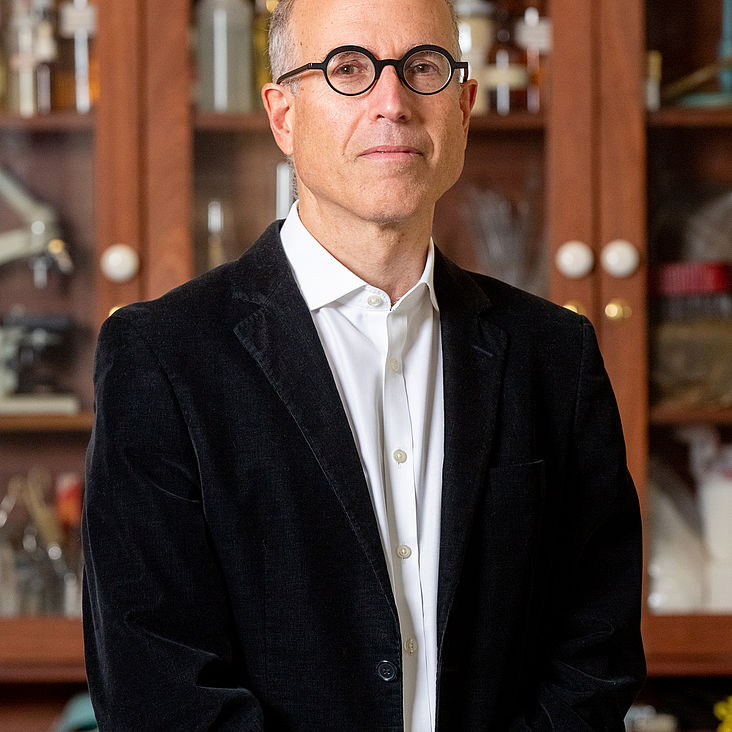
MacArthur x BGC: What is Research?
With Tom Joyce, Hideo Mabuchi, and Sheila Nirenberg, moderated by BGC dean, Peter Miller
Research may well be the key word in our contemporary knowledge culture, with global investment in research across all industries estimated at $1 trillion, and its importance acknowledged by governments, industry, and academia around the world. Yet, the idea of research, the practice of research, and the social life of research is not a subject of reflection. Of the 164 million items in the catalogue of the Library of Congress, only 43 fall into the category “Research—History.” To begin the task of understanding research, Bard Graduate Center has gathered a group of artists, scientists, and humanists—all MacArthur “Genius” Award winners—for three evenings of discussion moderated by Dean Peter Miller, himself a MacArthur Fellow. These conversations launch a project on research that will culminate in an exhibition at the Bard Graduate Center Gallery in fall 2023. Other conversations in this series include:
Tuesday, October 3, 6–8 pm
Poet Campbell McGrath, Biomedical researcher Elodie Ghedin, theather artist Annie Dorsen
Tuesday, November 19, 6–8 pm
Photographer and filmmaker An-My Lê, geochemist Terry Plank and historian Marina Rustow
There is no charge to attend the conversations, but space is limited, so please reserve your tickets in advance.
Supported by the John D. and Catherine T. MacArthur Foundation

Meet the MacArthur Fellows
Tom Joyce is a sculptor, MacArthur
Foundation Fellow, and widely acknowledged as one of the foremost practitioners
in the field for his contributions to the art and science of forging iron. Initially trained as a blacksmith in the rural
farming community of El Rito, New Mexico in his youth, Joyce’s works examine
the physical, environmental, political, and historical implications of using
iron as a primary medium. Working from studios in Santa Fe, New Mexico;
Brussels, Belgium; and at several industrial forging and foundry facilities in
the US, his concerns and observations are expressed through multimedia
installations, immersive soundscapes, video projections, photography, and
through materials that have inherited specific histories from prior use.
Hideo Mabuchi is a physicist who uses optical methods to extend our understanding of quantum behavior. Mabuchi’s studies provide an experimental vehicle for exploring how thermodynamic processes mask quantum behavior, and how their interaction might be harnessed for important practical uses. Using optical trapping protocols, he investigates the effects of external perturbations on quantum behavior. Mabuchi specifically focuses on examining the long-term dynamic evolution of quantum systems. This line of research is establishing the groundwork for future advances in both fundamental physics and practical applications. In addition, physics at the intersection of the quantum and thermodynamic regimes may play a vital role in determining the conformation of large biomolecules (such as enzymes) whose function depends on correct three-dimensional structure.
Mabuchi received his AB in physics from Princeton University (1992) and PhD in physics from California Institute of Technology (1998). He spent nine years as a faculty member at Caltech with appointments in physics and in control and dynamical systems, then moved to Stanford University as professor of applied physics in 2007. He has been serving as chair of the applied physics department since September 2010. Selected honors include an A.P. Sloan Foundation Research Fellowship, an Office of Naval Research Young Investigator Award, a fellowship from the John D. and Catherine T. MacArthur Foundation, and the inaugural Mohammed Dahleh Distinguished Lectureship awarded by University of California, Santa Barbara.
Sheila Nirenberg is a neuroscientist exploring fundamental questions about how the brain encodes visual information and developing an alternative approach to restoring sight after photoreceptor cell degeneration. In the visual sensory system in mammals, the photoreceptor cells in the retina take in information from the outside world, such as an image or visual pattern. This information is then passed through the retinal circuitry to the ganglion cells, which transform it into a neural code that the brain can understand. In the case of diseases such as macular degeneration and retinitis pigmentosa, which affect approximately 20–25 million people worldwide, vision is lost when deteriorating photoreceptor cells no longer take in visual signals.

